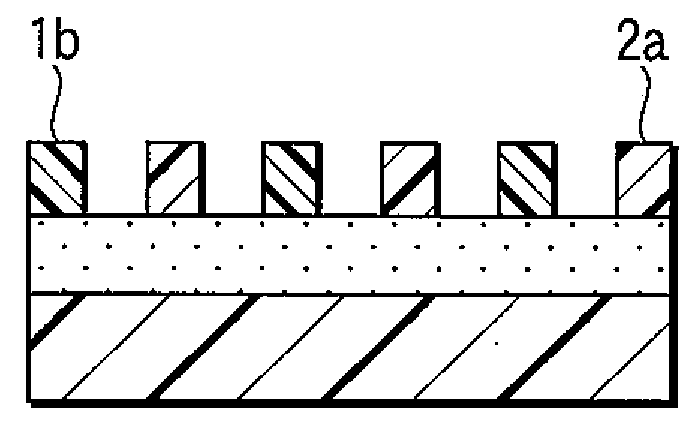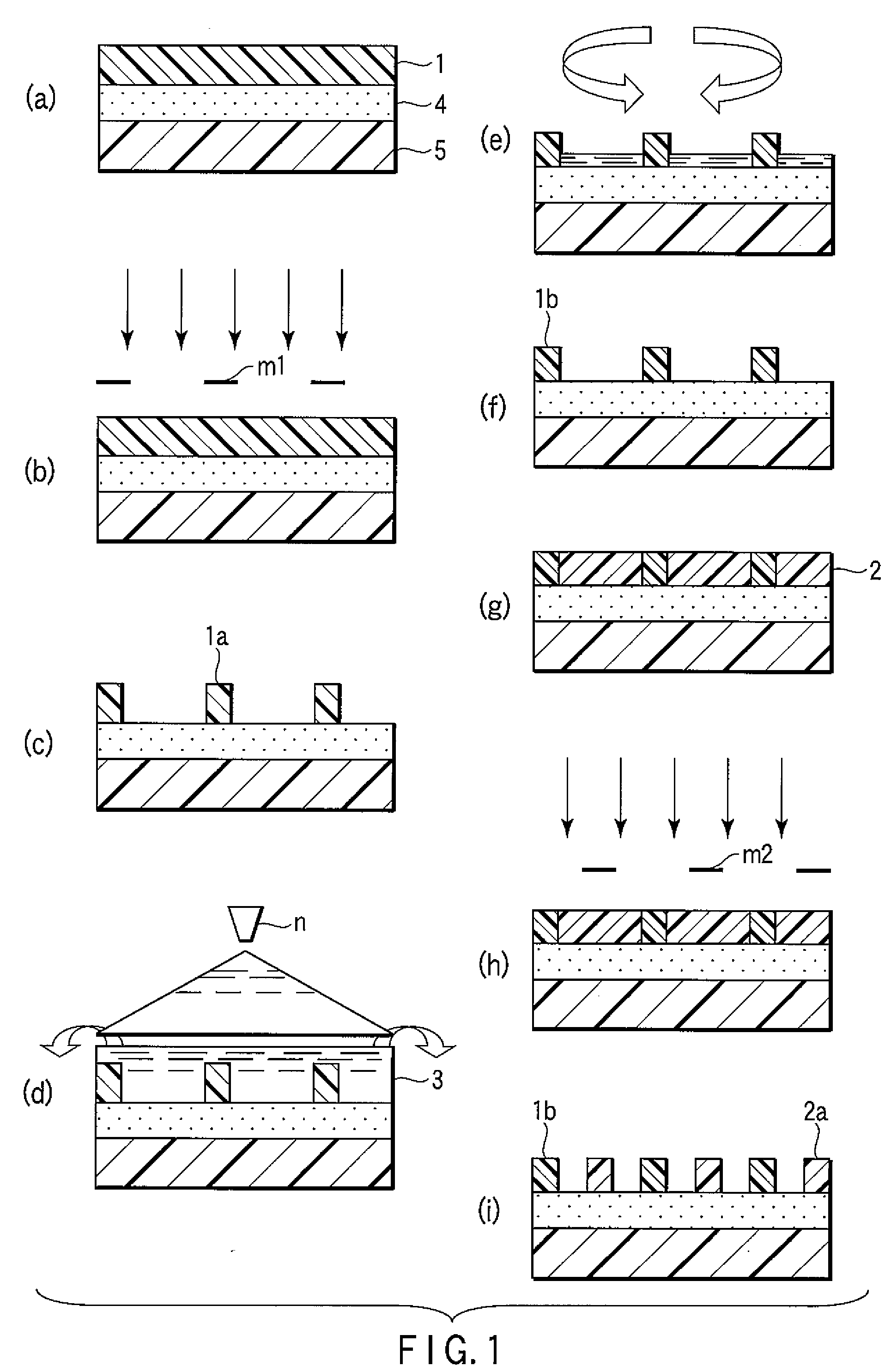Surface treating agent for resist-pattern, and pattern-forming method using same
a surface treatment agent and resist pattern technology, applied in the direction of photomechanical treatment, microlithography exposure apparatus, instruments, etc., can solve the problems of inability to apply to a freezing process, inability to control the pattern dimension after etching, and increase the number of operations
- Summary
- Abstract
- Description
- Claims
- Application Information
AI Technical Summary
Benefits of technology
Problems solved by technology
Method used
Image
Examples
examples
[0447]Now, the present invention will be described in greater detail with reference to Examples, which however in no way limit the scope of the present invention.
[0448]
[0449]Synthesis of Resin (1)
[0450]In a nitrogen stream, 8.4 g of methyl isobutyl ketone was placed in a three-necked flask and heated at 80° C. A solution obtained by dissolving 9.4 g of 2-methyl-2-adamantyl methacrylate, 4.7 g of 3-hydroxy-1-adamantyl methacrylate, 6.8 g of β-methacryloyloxy-γ-butyrolactone and 6 mol %, based on the total amount of monomers, of azobisisobutyronitrile in 75.3 g of methyl isobutyl ketone was dropped thereinto over a period of 6 hours. After the completion of the dropping, reaction was continued at 80° C. for 2 hours. The reaction mixture was allowed to stand to cool and was poured into a mixture of 720 ml of heptane and 80 ml of ethyl acetate. The thus-precipitated powder was collected by filtration and dried, thereby obtaining 18.1 g of resin (1).
[0451]As a result of GPC measurement u...
PUM
| Property | Measurement | Unit |
|---|---|---|
| wavelength | aaaaa | aaaaa |
| wavelength | aaaaa | aaaaa |
| height | aaaaa | aaaaa |
Abstract
Description
Claims
Application Information
 Login to View More
Login to View More - R&D
- Intellectual Property
- Life Sciences
- Materials
- Tech Scout
- Unparalleled Data Quality
- Higher Quality Content
- 60% Fewer Hallucinations
Browse by: Latest US Patents, China's latest patents, Technical Efficacy Thesaurus, Application Domain, Technology Topic, Popular Technical Reports.
© 2025 PatSnap. All rights reserved.Legal|Privacy policy|Modern Slavery Act Transparency Statement|Sitemap|About US| Contact US: help@patsnap.com



